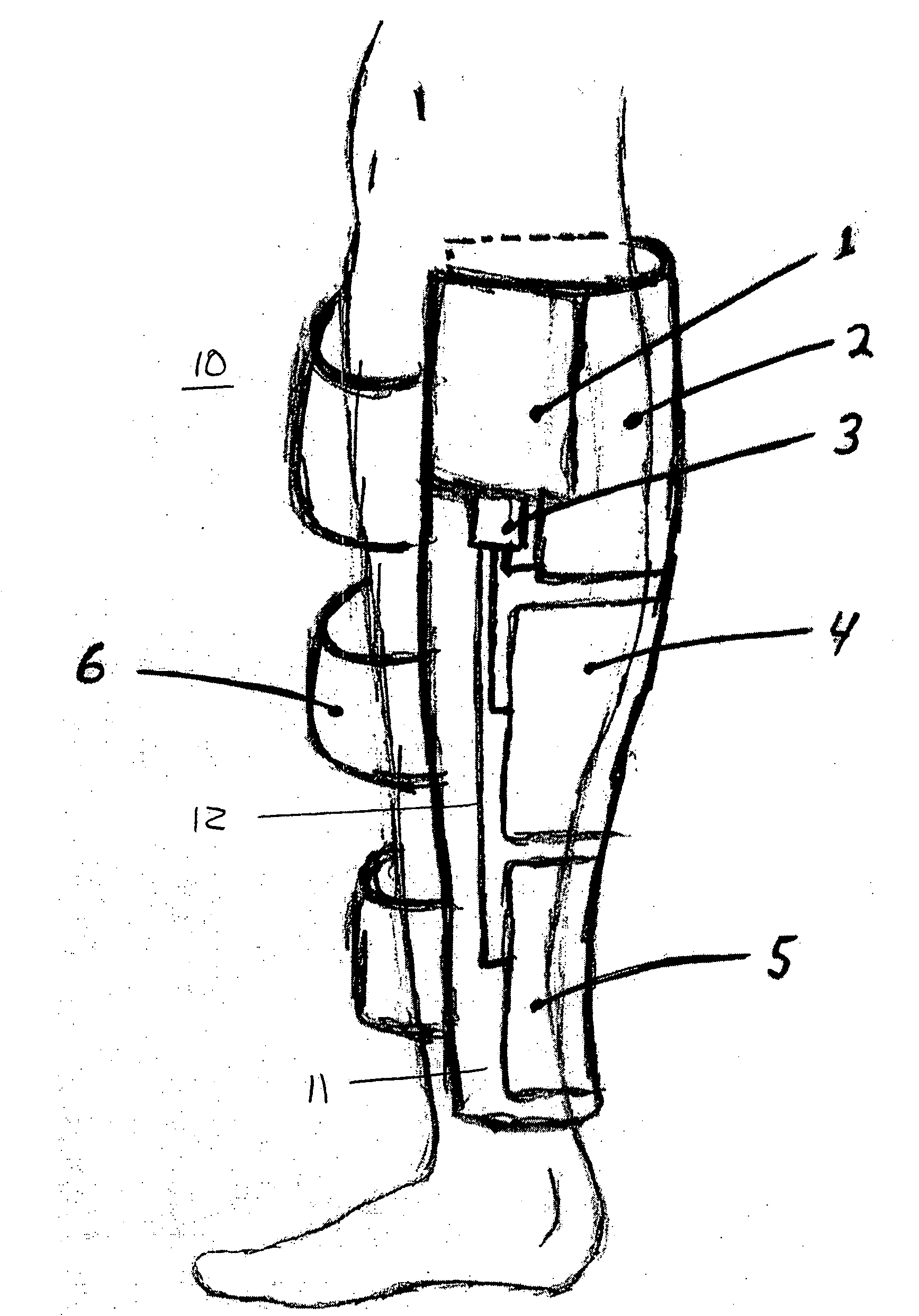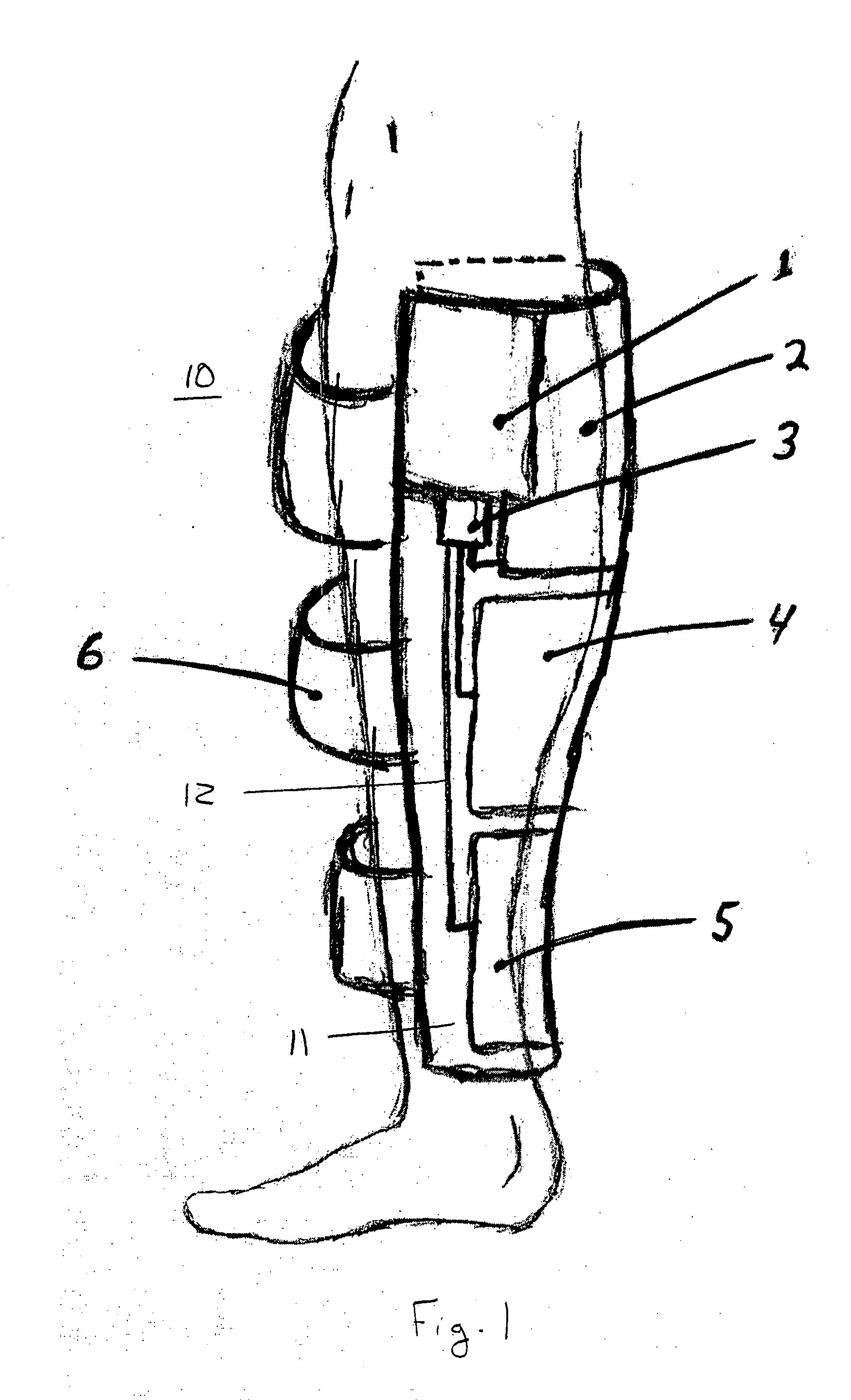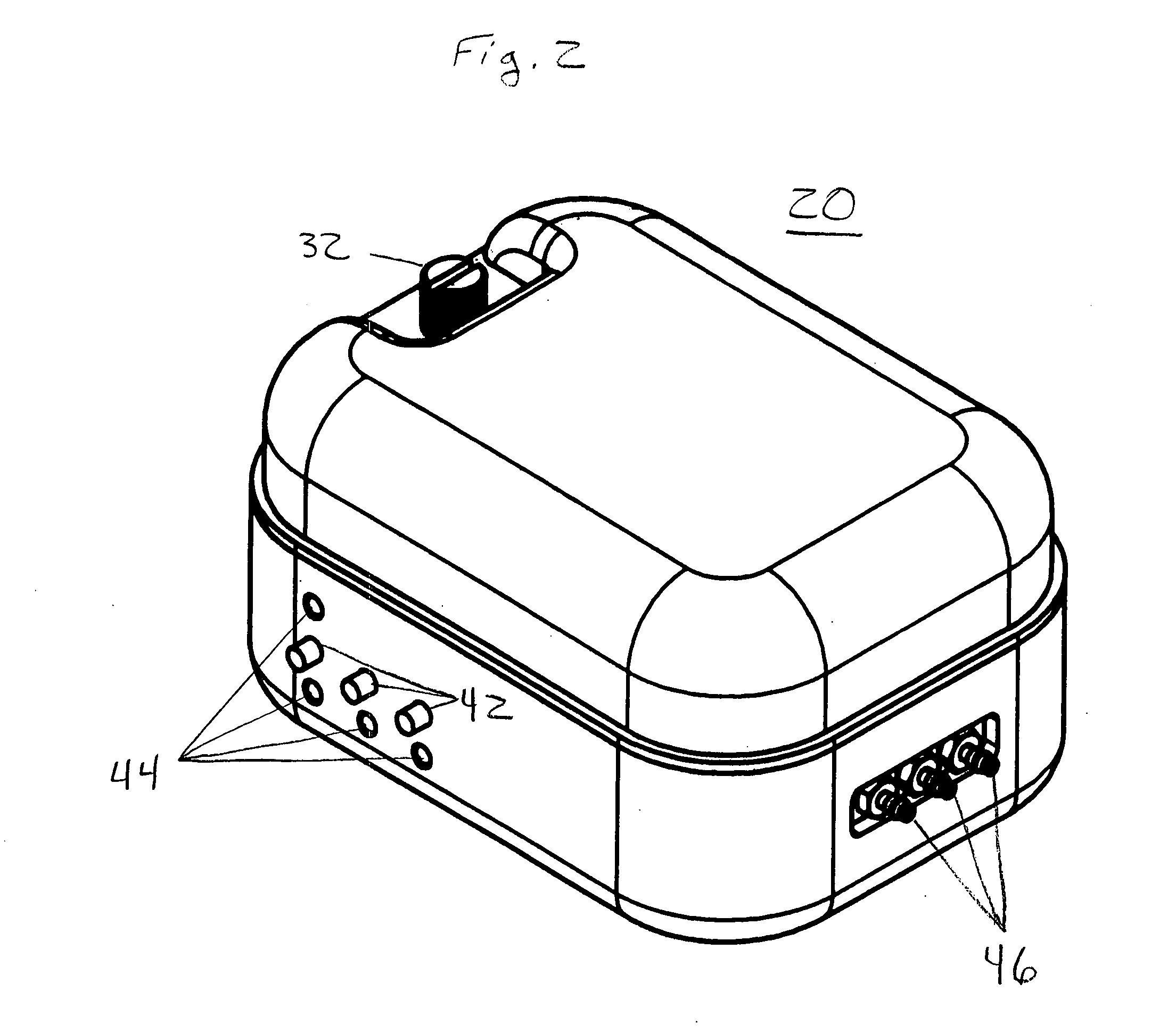Medical device
a technology for medical devices and sleeve thrombosis, which is applied in the field of medical devices for preventing thrombosis of deep veins, can solve the problems of increasing nursing care, reducing and affecting patient compliance, so as to reduce the use of medical devices. , the effect of preventing undue expansion of the sleev
- Summary
- Abstract
- Description
- Claims
- Application Information
AI Technical Summary
Benefits of technology
Problems solved by technology
Method used
Image
Examples
Embodiment Construction
[0024]FIG. 1 shows an embodiment of the present invention for use on the calf of a patient. The mechanical prophylaxis device 10 includes a non-rigid compression sleeve with a bladder-bearing section 11 and securing straps 6. The securing straps preferably use Velcro® attachment strips or other suitable attachment device (not illustrated) to secure compression sleeve to the patient's leg, and to increase the effectiveness of the pressure application by the bladders by resisting radial expansion of the compression sleeve during bladder inflation.
[0025]The bladder-bearing section 11 of the compression sleeve includes, in this embodiment, three inflatable compression bladders 2, 4, 5. The bladders in this embodiment are located on an inside surface of the section 11, between section 11 and the patient's leg. The bladders may be positioned elsewhere, such as between layers of the non-rigid compression sleeve or even outside the sleeve, as long as adequate therapeutic pressure can be app...
PUM
 Login to View More
Login to View More Abstract
Description
Claims
Application Information
 Login to View More
Login to View More - R&D
- Intellectual Property
- Life Sciences
- Materials
- Tech Scout
- Unparalleled Data Quality
- Higher Quality Content
- 60% Fewer Hallucinations
Browse by: Latest US Patents, China's latest patents, Technical Efficacy Thesaurus, Application Domain, Technology Topic, Popular Technical Reports.
© 2025 PatSnap. All rights reserved.Legal|Privacy policy|Modern Slavery Act Transparency Statement|Sitemap|About US| Contact US: help@patsnap.com



